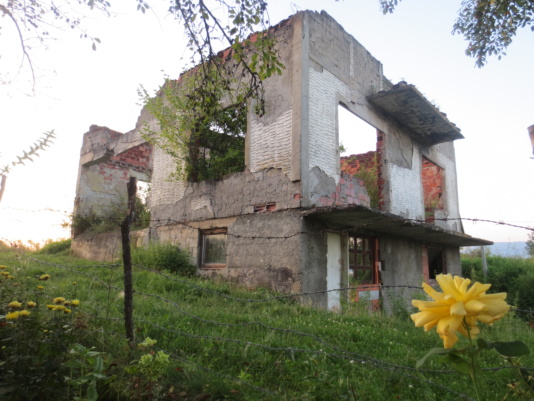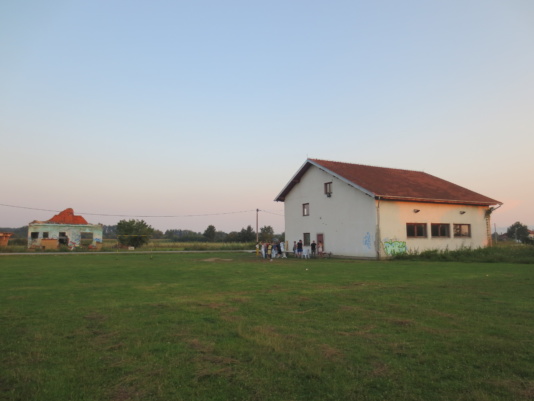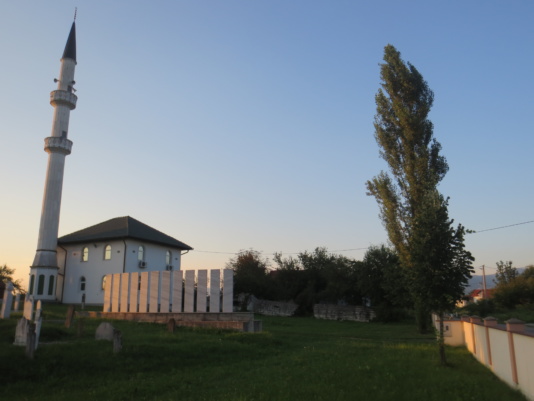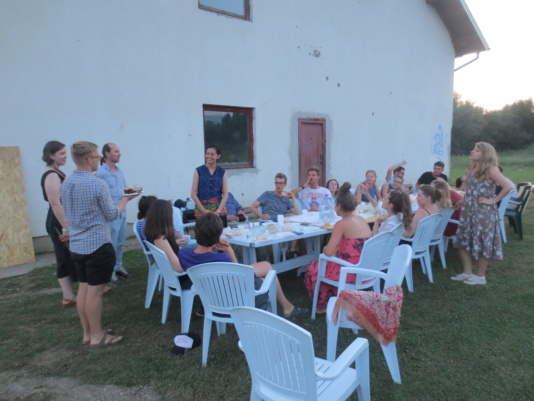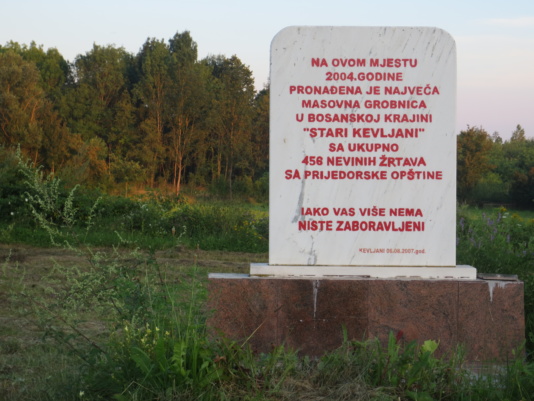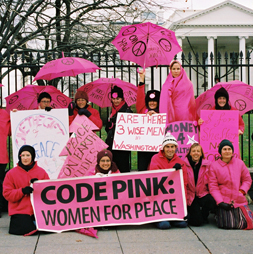- About
- Topics
- Picks
- Audio
- Story
- In-Depth
- Opinion
- News
- Donate
- Signup for our newsletterOur Editors' Best Picks.Send
Read, Debate: Engage.
| August 20, 2018 | |
|---|---|
| topic: | Peace and Reconciliation |
| tags: | #Bosnian War, #Peace Centre, #mass grave, #most mira |
| located: | Bosnia and Herzegovina, United Kingdom |
| by: | Katarina Panić |
With 456 bodies found here in 2004, it is one of the largest mass graves after the Bosnian War of the 1990s. There was a lot of water inside so they had to ask Besim to use his land property to drain the water.
“A few weeks ago they have been digging again here. You see there, no grass, but soil only. But they only found some garbage. Apart from that, I see people come and go - just like you. They don’t come to talk to me about it. They just spend some time here. They usually come in groups, with a guide – not individually – and that’s it. Most recently I saw (Kemal) Pervanić too. He was there with his group. I think they’re from England”, Besim told FairPlanet.
Kemal Pervanić from Kevljani survived a concentration camp at Omarska in 1992. Ten years later he returned to his homeland which was still ethnically divided among Bosniaks (Muslims), Serbs (Orthodox) and Croats (Catholics). And it remains so to this day.
“I still keep my plane ticket when I first visited. When I came here there was nothing left. Everything was overgrown, covered in bushes and trees. The house was robbed and demolished and there was no place to sit down. There was nothing left inside: no roof, no windows, no doors, no sockets, no electric cables. There was half of my mother’s sofra (traditional low kitchen table), which she used to roll pastries to make pies. I remember I had a huge vinyl collection before the war and then I found only one Ike and Tina Turner single vinyl. I wanted to take it to London, but I put it in the sun to dry and it warped. I remember some birds ‘moved in’. This was the picture I had to face – those were the remnants of my previous life”, Kemal told FairPlanet over the sound of ezan (call to prayer) from the nearby mosque.
Three years later Kemal came to Kevljani again and next year, in 2006, he initiated Most Mira, a UK and Bosnia based charity. The name means Bridge of Peace and its aim is to help to build bridges between divided communities. He both gathered the group of people who recognized the idea and found his way to struggle with his own trauma. Asked how would he describe himself now and then, he said he had a lot of hair then, and now he is a bit bald.
“It was painful, but I wouldn’t say I am a different person now and then. I can’t forget what I survived and I never will. I did forgive and after that, I feel richer. I have so many good things in my life so as I still have my old me and everything I had before”, he explained, stressing he does not want to be portrayed as a victim only which media usually do.
Most Mira is established in 2008 and it runs different projects involving local young people from ethnically divided communities as well as hundreds of volunteers, students and activists all over the world: arts festival for 500 children from segregated schools, drama projects lasting six to nine months culminating in performances not only in the theatre in Prijedor but in each other’s schools, training in democracy and advocacy skills to discuss the legacy of conflict and local human rights issues, and Project on Peacebuilding weeklong course designed to expand understanding and knowledge of peacebuilding and its challenges, in addition to guided site visits in the region of Prijedor.
“We don’t talk about our recent past with our high school or primary school participants. However, this year we had a young girl from Omarska, who participated in our high school theatre project and I asked her to apply to take part in our project on peacebuilding (POP). She was born several years after the war and she really didn’t know what happened in the nineties in her own village. Now she is a young adult and therefore she is allowed to participate in peacebuilding camp which takes place every August”, Kemal said.
This year there were more than 20 young people from America, Belgium, Bosnia-Herzegovina, Chile, Croatia, England, Germany, Hungary, Poland, Serbia, and the UK.
“I grew up watching the conflict on the television and in the news, but I was too young to understand the politics behind the hatred, divisions, and murder. Despite being over 20 years since the official end of the conflict, it was surprising to see that many divisions still survive. The war, although not an active conflict, lives on in so many lives. Communities are still divided. Wounds are deep. An underlying sense of mistrust and difference permeates the air within the rural communities”, Edward Lawrence from last year’s POP alumni wrote on his blog.
All these projects have one thing in common: they all take place in Kevljani. That is one of the reasons Most Mira decided to build a Peace Centre in this “Pretty Village”, which is the title of Kemal’s documentary, a story of human resistance in the face of denial by the perpetrators of war crimes. The Centre will represent the crown of all the work Most Mira has done to date as well as kind of a milestone – it should make future projects sustainable and make them run all year long rather than periodically.
“Most Mira will transform the ruins of the first building in the village that was bombed during the war into our Peace Centre using the environmentally sustainable method of rammed earth walls. Students of architecture from Bosniak, Bosnian-Serb and Bosnian-Croat backgrounds worked on the plans alongside their British peers. We have gained outline planning permission and are finalizing the designs with renowned Austrian rammed earth construction specialists Lehm Ton Erde”, Most Mira says.
Kemal recalls architecture students from Bosniak-dominated parts of the country met and work together for the very first time with their colleagues from Serb-dominated entity right in this project. Their fundraising campaign to raise funds to build the Centre is ongoing. Most Mira has raised around 55 percent of the funds required to complete this project. Additional £85,000 is still needed before the first phase of construction can begin in early spring 2019. When asked to describe how he imagines this site will look like in five years time, Kemal has no doubt it’s going to be a vibrant and popular destination and will host local users, students, and volunteers from all over the world.
“We will have a whole new generation of people who participated in our projects. They’re going to be businessmen, policemen, teachers, artists etc, and they’re going to keep fighting for human rights and for a fair political system which benefits everyone. They’re going to represent a true human capital and they’re going to encourage others to come back to Bosnia. The Centre will welcome anyone who has ideas on how to make this society better”, Kemal added.
By copying the embed code below, you agree to adhere to our republishing guidelines.

